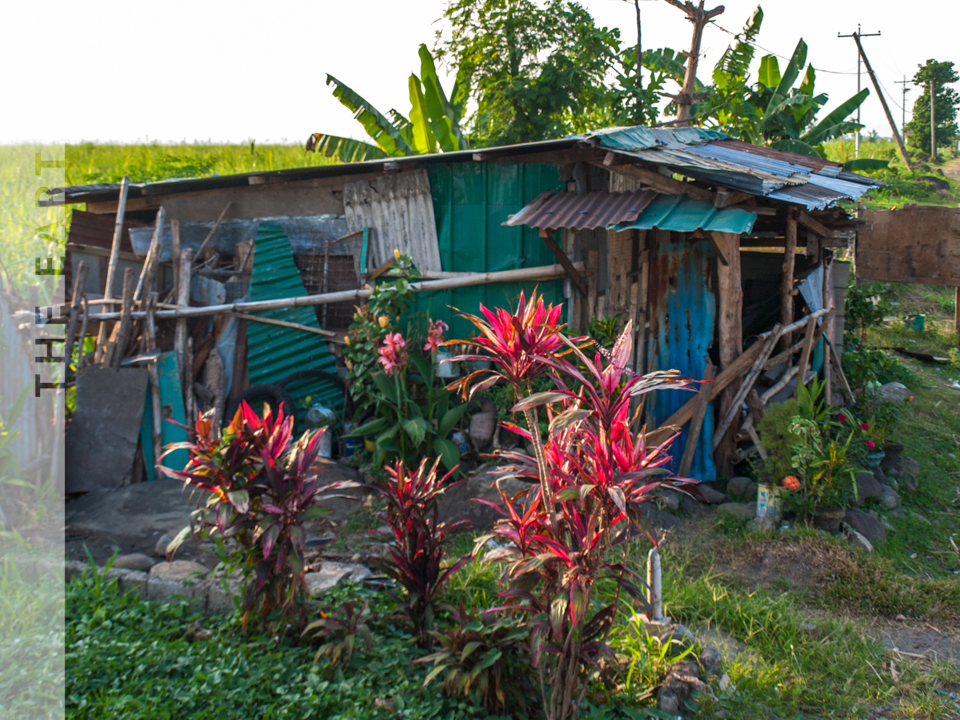 |
A man came by to look through the debri for his personal
documents that had been buried by the storm and tree.
© 2014 Andrea Rip
|
Perhaps the time that I was most moved to understand how deep Yolanda's devastation permeated through a place was while I worked at the Valencia Elementary School to clear a classroom of a large tree. Initially, Yolanda uprooted and massive tree onto the classroom. It destroyed the roof and compromised the entire structure of the classroom.
Another response team sent a group with chainsaws who cut up the tree in manageable pieces. However, when All Hands took on the project, the room was a pile of branches, sawdust, leaves, glass, concrete, and a dilapidated metal/tin ceiling structure that was between six to 12 feet (2 - 3m) high.
 |
The "Philosophy of Education in the New Society" sign was
a casualty of Yolanda.
© 2014 Andrea Rip
|
Every day, between two to six people worked on cleaning this room. Some used a metal grinder to safely remove the roof structure as others shoveled sawdust and pulled the branches from the room. After we cleared the rooms, we sledge hammered the walls and pulled them down to clear the concrete foundation slab so that a new classroom could be built.
 |
The interior of the classroom next-door to the classroom that was destroyed
by a massive tree at Valencia Elementary School. In much better condition
than the kindergarten room that shared a wall, this room was waiting for an
engineering assessment to determine if the walls were structurally sound.
© 2014 Andrea Rip |
As we cleared the tree out, we began to uncover what remained of the classroom after the storm. Most of our job sites were cleared out of the substantial and salvageable material before we arrived. I wish I had taken a photo of the alphabet blocks that I discovered mixed in with sawdust, but it simply remains a sad memory in my head of the kindergarten classroom that had probably been filled with children just a day or few before the storm. I wanted to keep one of the blocks as my reminder of the storm, but brought them to the principal's office instead - hoping that even though the blocks were quite battered, some children might still be able to use them.
As we found items that were in the classroom, much of which was still wet from ongoing rains or broken, we tossed it in a pile of mixed debris. One of the afternoons when we were working, a man came by to assess the work we had done. He asked if we found any items in the room and I pointed him in the direction of our pile. A little later, I walked by and saw him still sorting through some of the papers. In one of the envelopes he pulled out some important documents and showed me the one on top that read, "Marriage Contract." He had many of his personal effects in that classroom. As sad as I was for what had been lost, I was relieved that he had found some important pieces of what he was looking for.
Even being on the ground where Yolanda hit the hardest, it was hard to comprehend how much had been lost. This work site provided me a small picture of how much it will take to rebuild people's lives - even after the structures are back in place, there is so much that will need to be acquired to fill up those new empty places.





















